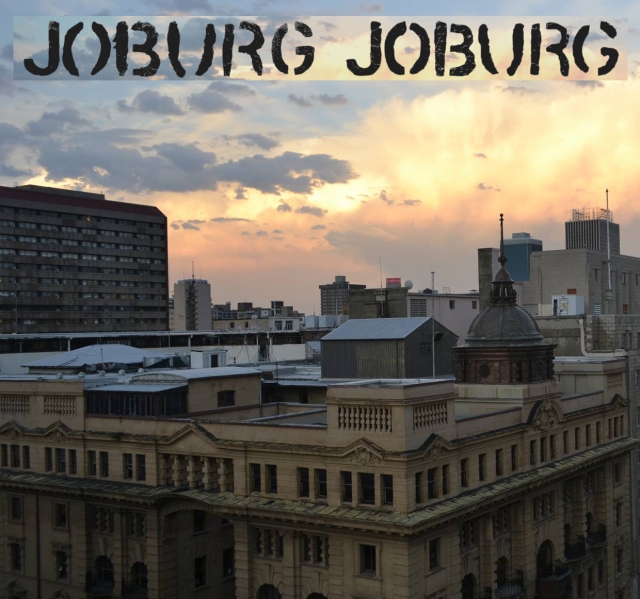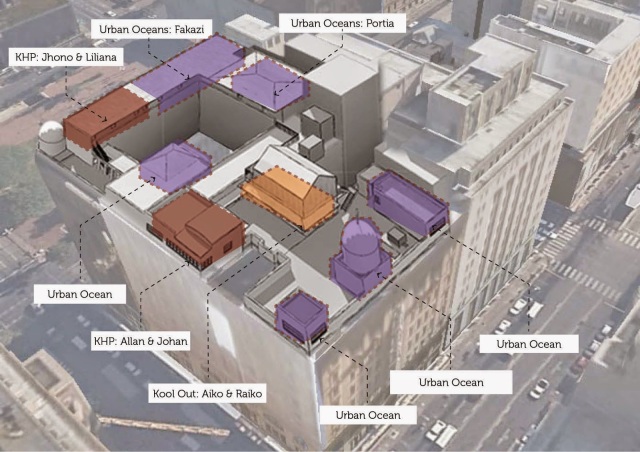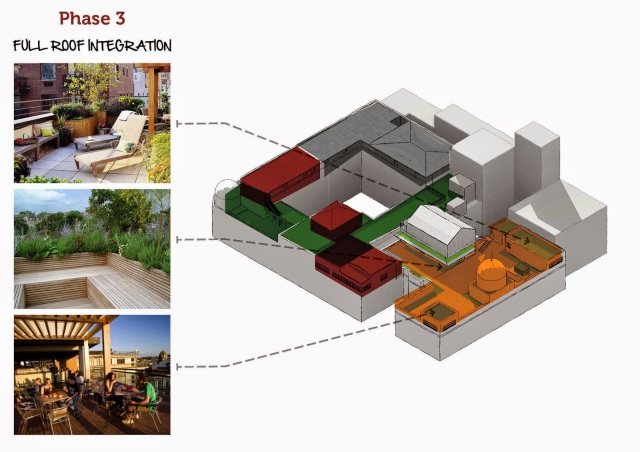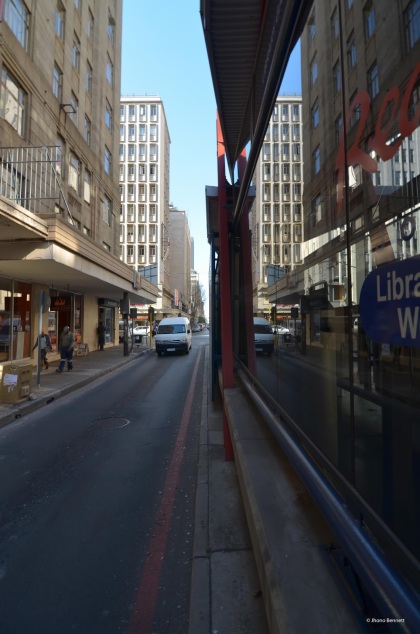 |
| Image: Johan Stegman |
The Joburg Joburg story starts with Johan Stegman, and engineer/artist moving into an unoccupied rooftop space owned by a large down town Joburg developer at their flagship property of Corner House.
 |
| Image: Johan Stegman & Allen Laing |
Through a set of chance circumstance and a burning desire to engage with the city, Johan with Allen Laing, a sculptor working in the inner city, set up an extensive and highly successful multi-artist exhibition exhibition to engage with this question of ‘responding to the centre’.
 |
| Image: Johan Stegman |
See the full Joburg Joburg origin story here: https://joburgjoburg.wordpress.com/2014/04/14/the-joburg-joburg-story-finding-the-center/
At this point I was living in the building across from Corner House and assisted the Joburg Joburg team with some minor installation work. This relationship developed as I began assisting the team with some spatial design support towards what they called the Kingdom Hideaway Partnership Rooftop Vision. A strategic design initiative to bring together the various actors at the Corner House building around a common vision of ‘productive’ inner city use.
As part of the arrangement was that I was allowed stay on the roof at corner house for a nominal fee where I took up residence in the Apartheid planned ‘domestic quarters’.
These spaces were the logistic outcome of the Group Areas Act that did not allow black people to live in the same structure as white people which in the suburban areas manifested into what we see today as the ‘maid’s room’ a separate room on the boundary of suburban properties.
But in the city these spaces were placed on the roof’s of building and carefully designed with shared (under serviced) ablutions, lockable areas (to keep people in, not out) and windows that are too high to see out of, but provide the minimal amount of ventilation to pas regulation.
 |
| My quarters |
These spaces are still in use all over Johannesburg, and hold amazing potential to allow mixed income housing as well as developing a more integrated urban culture – but continue to be used to house a a portion of the labour sector in quite unfair conditions.
Rooftop Socio-Spatial Planning
This initial task was to design and strategies a way to maximise the use of the rooftop space, which is currently underutilised and create a shared environment that only brings the various stakeholders on the roof together, but creates a space for others to access city from.
A phased, multi use strategy was proposed that included light scale rooftop gardening, venue spaces and a potential creative residence that would link with existing functions and support the vision held by the developers for the building.
 |
| Rooftop Garden Proposal |
This strategy wasn’t met with a completely negative response, but due to the various factors involved with a development in the city certain stakeholders were not willing to make the initial investment of time or commitment, but instead chose to pursue ‘safer’ development investments and options.
 |
| View from the Roof Roof Roof |
//cdn.embedly.com/widgets/platform.js
Braamfontein
Unfortunately my time with Joburg Joburg has come to an end, and I am know residing on the edge of the inner city in the vibrant and interconnected Braamfontein District.
 |
| Vie from Civic Towers to Inner City |
I am still conducting other research into the city of Joburg through my work with the University of Johannesburg’s Architecture Department as well as other initiatives that I am involved in.





















